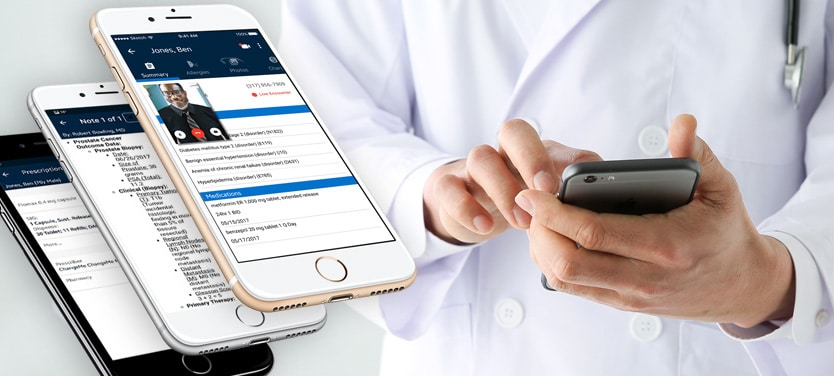
Why On-the-Move Doctors Need Mobile Practice Technology
It seems like everything has an app in the present day. The world is accessible at our ...
March 9, 2020
It’s already 2023 and some providers still are not sure whether or not they need a mobile EHR at their practice. There is no time to waste as more and more practices are in need of efficiency tools that help them document effectively, work faster, and provide top-of-the-line care to their patients. The technology your practice uses on a daily basis should never slow you down rather it should help you work at your best pace, accomplishing the most in your day without causing frustrations. The right mobile EHR will help your practice take a step into the future of health practice technology.
Mobile EHR Features to Look For:
1) Outstanding Dictation
Dictation has been around for ages to help physicians take notes on a visit. It offers a personal solution to documenting that prevents miscommunications between patients and physicians while helping a doctor work more quickly. In the past, this was done with an old-fashioned tape recorder. Today, providers are able to access outstanding dictation tools with their mobile EHR. More secure than a tape recorder, this tool is protected and only accessible to authorized users.
A state-of-the-art dictation tool in your mobile EHR not only keeps your visit notes more secure, but it promotes higher efficiency in a physician’s workflow. Outstanding speech recognition software ensures quick and accurate notetaking that allows the physician to work at their best pace.
2) Modify Encounters
Real-time charting, billing, and more are capable with the right mobile EHR. Before the invention of the mobile EHR, there existed a gap between the time of a patient encounter and the time the physician was able to document in the patient’s chart. This led to gaps in information that the provider was likely to forget during that time. Gaps in information can risk the life of the patient if key details are missing and it can also lead providers to a higher number of denied claims.
Mobile EHRs eliminate this time gap by making it possible for providers to create new or modify existing encounters at the time of service. This means real-time notetaking, minimizing the risk of missing details that might put the patient or your billing at risk.
3) Capture Patient Images
The more information in a patient’s chart, the more informed a physician can be when it is time to make a decision for their patient. This includes tests, lab results, and patient history, but it should also include images taken at the time of services.
The ability to capture patient images on your mobile device and upload them directly into the patient’s chart is now possible with a Mobile EHR. This helps providers reference a patient’s condition and their progress over time rather than try and take notes that perfectly describe a patient’s condition. This can be great for tracking the progress of a wound, injury, sutures, and more as a patient progresses in their treatment.
4) HIPAA compliant Communications
Lastly, your mobile EHR can help your team communicate quickly and securely, never putting your patient data at risk. Rather than speaking over the phone or texting on a non-secure device, your team can communicate with one another over the Mobile EHR.
No one outside of your practice will have access to this communication tool, protecting your patients and your practice from external risks. This secure method of communicating helps your team work more effectively throughout their day, asking questions and working together to offer the best possible care.
To find out how a mobile EHR can benefit your practice, click here.